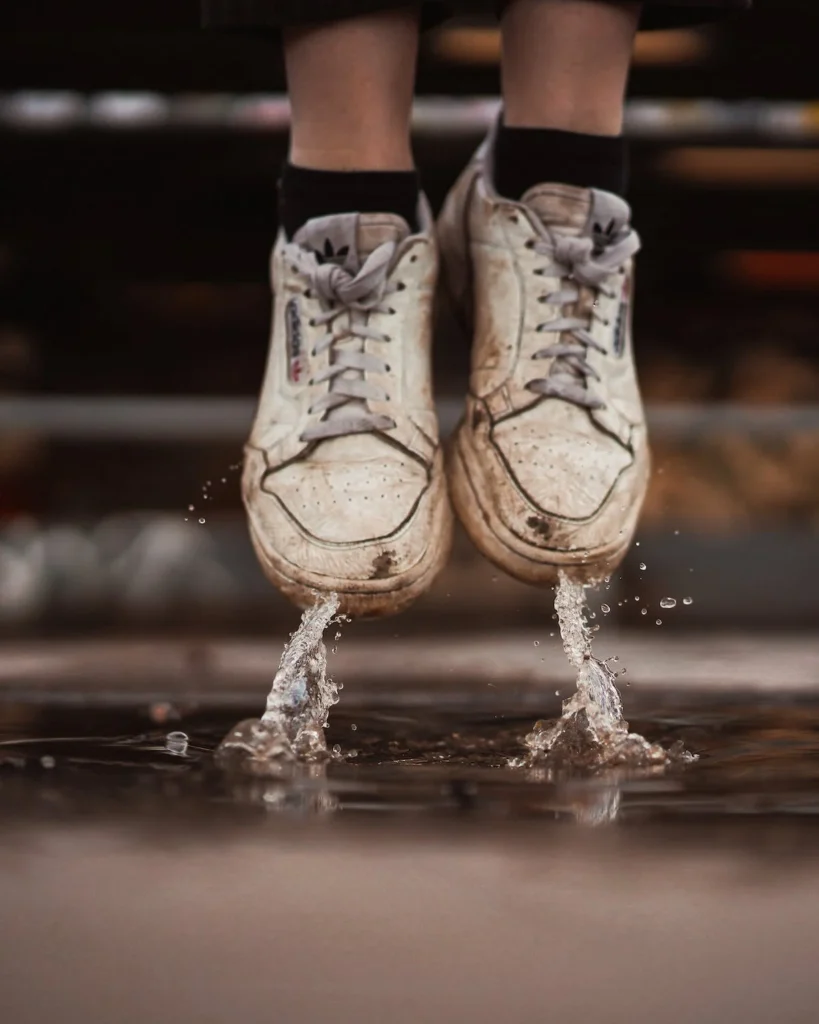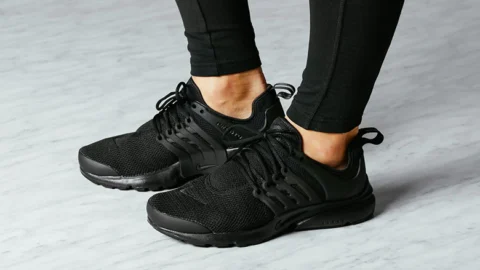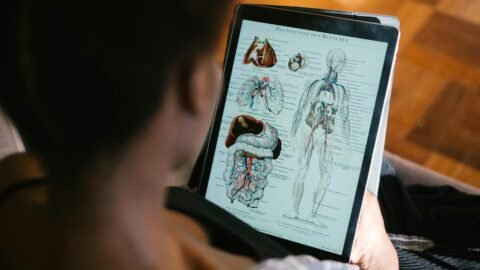How to Maintain and Care for Your Nursing Shoes
For healthcare professionals, the right pair of nursing shoes is a crucial component of the daily uniform. These shoes not only provide comfort during long shifts, but also support and protect the feet from the hazards of a clinical environment. Regular maintenance and care are imperative to extend the life of nursing shoes and to ensure they remain a reliable partner in a demanding work setting.
Cleaning nursing shoes on a routine basis is fundamental due to the exposure to spills and contaminants common in medical facilities. Using appropriate cleaning methods can help preserve the material of the shoes, whether they are made of leather, synthetic, or cloth. In addition to cleanliness, proper storage is key to preventing deformation and damage when the shoes are not in use.
Beyond basic cleaning and storage, addressing the inside of the shoe is just as important as the exterior. Odors and bacteria can accumulate, so employing deodorizing practices and products designed for footwear can significantly improve the in-shoe experience. Gradual wear and tear on the insoles may also necessitate replacement to maintain optimal support and comfort. By adhering to these maintenance strategies, healthcare workers can ensure their nursing shoes remain in top condition, providing safety and comfort throughout their careers.
Understanding the Importance of Nursing Shoe Maintenance

Proper maintenance of nursing shoes is essential for hygiene, comfort, and durability. Nursing professionals often work long shifts, and their footwear is subject to contaminants and stress, which can lead to wear and tear. Regular cleaning minimizes the amount of bacteria and prevents infections, a critical concern in healthcare environments.
Nursing shoes designed for support help alleviate the strain on the feet and back. Maintaining these shoes ensures the structural integrity needed for proper posture and minimizing discomfort. Moreover, well-maintained shoes can prevent workplace accidents by ensuring good grip and tread, reducing slips and falls.
Shoe lifespan is significantly extended through proper care. This results in cost savings over time, as the need to frequently replace worn-out footwear is reduced.
Key points for nursing shoe maintenance:
- Hygiene: Regular cleaning to remove contaminants.
- Comfort: Care to sustain cushioning and fit.
- Safety: Inspection and maintenance of soles for grip.
- Longevity: Proper storage and care to extend the life of the shoes.
Finally, well-maintained nursing shoes contribute to a professional appearance, reflecting the meticulousness expected in healthcare. Regular care ensures that nurses are always prepared for their demanding roles.
Selecting the Right Nursing Shoes
Choosing the right nursing shoes is crucial for comfort and safety on the job. They need to provide support and durability to handle long hours of standing and walking.
Factors to Consider When Buying
When purchasing nursing shoes, nurses should assess:
- Fit and Comfort: Shoes should have a snug fit, leaving ample room for toes. Ensure they do not pinch or rub any part of the foot to avoid blisters.
- Support: Look for shoes with proper arch support and cushioning to reduce the risk of foot pain and fatigue.
- Slip Resistance: The outsole should be made of non-slip material to prevent falls on slippery hospital floors.
- Materials: Preferably, select shoes that are made of durable, easy-to-clean materials like leather or synthetic fabrics that can withstand frequent cleaning.
- Weight: Opt for lightweight shoes to reduce leg exhaustion during long shifts.
The Best Types of Shoes for Nurses
Nurses typically fare best with the following types of shoes:
- Clogs: Popular for their slip resistance and sturdy build. Many clogs also offer enhanced arch support.
- Sneakers/Athletic Shoes: Often favored for their superior cushioning and shock absorption.
- Slip-Ons: These are valued for convenience, provided they have sufficient support and slip-resistant soles.
A comfortable and functional pair of nursing shoes is a non-negotiable element for a healthcare professional’s wardrobe. They protect against workplace hazards and prevent the development of chronic foot conditions.
Daily Maintenance Tips
To ensure longevity and optimal performance, one’s nursing shoes require daily maintenance, focusing on cleanliness and storage.
Cleaning Your Shoes After Each Shift
After each shift, remove any visible dirt with a soft-bristled brush. Wipe the shoes with a cloth dampened with soapy water, then with a clean, damp cloth to rinse off the soap. For leather shoes, apply a conditioner after cleaning to keep the material supple.
Steps for Daily Cleaning:
- Brush off dirt
- Clean with soapy water
- Rinse with a clean cloth
- Condition leather surfaces
Proper Storage Methods
Store nursing shoes in a well-ventilated area to allow them to air out and prevent the buildup of odors. Keep them away from direct heat or sunlight to avoid material damage.
Storage Guidelines:
- Ventilate: Keep in an area with good airflow.
- Avoid heat: Do not place near heaters or in direct sunlight.
- Maintain shape: Use a shoe tree or stuff with paper to hold the shoe’s form.
Deep Cleaning Practices
Deep cleaning nursing shoes is crucial to ensure their longevity and to maintain a hygienic working environment. It involves a thorough sanitization process that goes beyond daily wiping and spot cleaning.
Frequency of Deep Cleaning
One should deep clean their nursing shoes at least once a month, depending on the frequency of use and exposure to contaminants. If shoes are exposed to bodily fluids or hazardous materials, immediate deep cleaning is necessary.
Materials and Tools Needed for Deep Cleaning
A comprehensive deep cleaning routine requires specific materials and tools:
- Soft Brush: For removing surface dirt and debris.
- Mild Detergent: Preferably non-abrasive and designed for use on footwear.
- Bucket or Basin: For soaking or hand washing.
- Clean Towels: To dry the shoes thoroughly post cleaning.
- Disinfectant: Alcohol-based is preferred for effective sanitization.
- Protective Gloves: To protect hands during the cleaning process.
| Material/Tool | Use | Notes |
|---|---|---|
| Soft Brush | To remove dirt | Gentle to avoid damage to shoe surface |
| Mild Detergent | For creating a cleaning solution | Non-abrasive; suitable for shoe material |
| Bucket/Basin | For soaking shoes | Should be large enough to hold shoes |
| Clean Towels | To dry shoes | Must be absorbent |
| Disinfectant | To sanitize shoes after washing | Alcohol-based for effectiveness |
| Protective Gloves | To protect hands during cleaning process | Must be durable |
One starts by using the soft brush to remove any loose dirt. Shoes can then be gently washed in a mixture of water and mild detergent, followed by thorough rinsing. Disinfectant is applied, and then shoes are allowed to air dry.
Protecting Your Shoes from Damage

Maintaining the integrity of nursing shoes is vital for their longevity and performance. Implementing protective measures can significantly reduce wear and tear.
Waterproofing and Protective Coatings
Waterproofing treatments are essential for nursing shoes exposed to fluids. Products like silicone sprays or waterproofing waxes can be applied to create a barrier against moisture and stains. Follow the steps in the table below to waterproof your shoes:
| Step | Action |
|---|---|
| 1 | Clean the shoes thoroughly, removing any dirt. |
| 2 | Apply the waterproofing agent evenly on the shoes. |
| 3 | Allow the shoes to dry completely before use. |
Using a protective coat not only makes the shoes water-resistant but also helps in repelling dirt and reducing scuff marks. Reapply the treatment periodically, especially after cleaning the shoes, to maintain protection.
Preventative Measures for Shoe Longevity
Nursing shoes can last longer when certain precautions are taken regularly. Here are some preventative measures:
- Store shoes properly: Keep them in a cool, dry place away from direct sunlight to prevent material degradation.
- Shoe rotation: Rotating between pairs of shoes can prevent excessive wear on a single pair.
It is also advisable to use a shoe protector or toe guard for the front part of the shoe to minimize damage from accidental impacts. Checking regularly for areas of wear and addressing them immediately by applying adhesive protectant patches or using repair kits can prevent small damages from turning into larger issues.
Addressing Common Issues
In this section, strategies will be discussed for rectifying common problems associated with nursing shoes, specifically managing odors and solving comfort issues.
Managing Odors
To combat odors, one should start by investing in moisture-wicking socks to keep the feet dry. Foot powders and deodorizing sprays designed for shoes can also be applied directly to them and inside the shoes. For a home solution, placing baking soda inside the shoes overnight can help absorb any unwanted smells. It’s crucial to keep the footwear in a well-ventilated area when not in use to prevent odor buildup.
| Action Step | Description |
|---|---|
| Use moisture-wicking socks | Reduce moisture to prevent bacterial growth and associated odors. |
| Apply foot powder | Absorbs sweat and minimizes odors. |
| Use deodorizing sprays | Eliminate bacteria that cause odors. |
| Baking soda technique | Natural odor absorbing remedy. |
| Ventilate shoes | Air out shoes to prevent dampness and odor accumulation. |
Solving Comfort Problems
For comfort issues, one should first ensure that they have the correct shoe size, as improper fit can lead to discomfort. Inserts or custom orthotics can address arch support or specific foot conditions. Regularly replacing shoes can help maintain proper cushioning and support. Additionally, alternating between multiple pairs of nursing shoes can allow for adequate rest and recovery between shifts.
| Comfort Solution | Purpose |
|---|---|
| Correct shoe size | Prevents discomfort and blisters from ill-fitting shoes. |
| Inserts or orthotics | Provides tailored arch support and cushioning. |
| Regular shoe replacement | Maintains cushioning and support to prevent foot fatigue. |
| Alternating shoe pairs | Reduces wear and tear and prolongs the life of the shoes. |
When to Replace Nursing Shoes
Nursing shoes play a critical role in providing comfort and support throughout long shifts. However, they do not last indefinitely.
Signs of Wear and Tear Regular inspection of nursing shoes is essential. They typically require replacing when:
- The tread on the soles shows significant wear, leading to decreased grip.
- Midsoles are overly compressed, indicated by wrinkles or unevenness, reducing support.
- The upper part of the shoe, especially around the toe area, has visible holes or tears.
Replacement Timeline
- Replace shoes approximately every 6-12 months, depending on usage.
- Heed manufacturer’s recommendations; some shoes are designed for extended wear.
Comfort and Foot Health
- Persistent discomfort while wearing the shoes suggests the need for a new pair.
- If there are signs of uneven wear patterns, it may indicate that the shoes are no longer providing proper support.
Performance Indicators
- A decrease in comfort during shifts can affect performance and may warrant replacement.
- Nurses should monitor for any new or increasing foot pain, which may result from worn out footwear.
By adhering to these guidelines, nurses can ensure their footwear remains effective and supportive, safeguarding their comfort and health on the job.
Resources and Recommendations
Quality care extends the life of nursing shoes significantly. This section provides a list of recommended products and places where one can purchase durable nursing shoes.
Recommended Products for Shoe Care
Cleaning Solutions:
- Saddle Soap: Ideal for genuine leather, it effectively cleans and protects the finish.
- Mild Detergent: Suitable for most materials; mix with warm water for regular cleaning.
Protective Sprays:
- Waterproofing Spray: Prevents water damage and stains.
- UV Protective Spray: Protects the shoe color from fading due to sunlight exposure.
Conditioners:
- Leather Conditioner: Keeps leather soft and prevents cracking.
- Fabric Conditioner: For fabric shoes, to maintain texture and appearance.
Brushes and Cloths:
- Soft-Bristle Brush: For removing dirt and applying cleaning products.
- Microfiber Cloth: For gentle cleaning and drying after maintenance.
Where to Find Quality Nursing Shoes
Specialty Retailers:
- Scrubs & Beyond: Offers a variety of reputable brands known for quality.
- Uniform Advantage: Provides a wide selection of shoes designed for healthcare professionals.
Online Marketplaces:
- Amazon: Filters allow one to search for specific features like slip resistance or cushioning.
- Zappos: Known for its customer service and easy return policy, making it reliable for finding a great fit.
Direct Brand Websites:
- Dansko: Renowned for its durable and supportive shoes directly catering to medical practitioners.
- Skechers: Provides a diverse range of affordable, comfortable nursing shoes with ample support.








